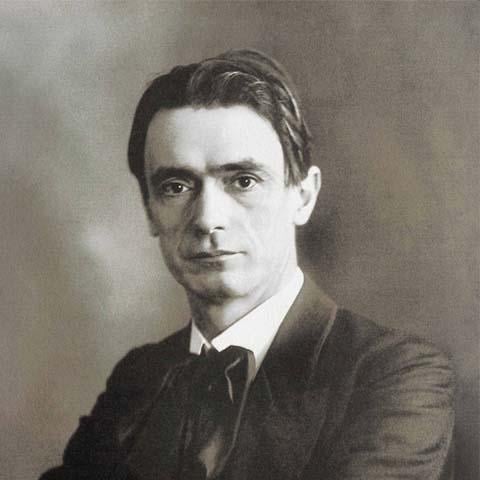Christianity as a Mystical Fact
GA 8
9. Jesus and his Historical Background
The soil out of which the spirit of Christianity grew is to be sought in the wisdom of the Mysteries. It was only necessary for the fundamental conviction to become widespread that this spirit must be introduced into life in a greater measure than had come to pass through the Mysteries themselves. But such a conviction was present in many circles. We need only look at the rule of life of the Essenes and Therapeutae who had been established long before the beginning of Christianity. The Essenes were a closed Palestinian sect, whose numbers at the time of Christ were estimated at four thousand. They formed a community which required that its members should lead a life which developed a higher self within the soul, and through this bringing about a rebirth. The novice was subjected to a strict test to ascertain whether he was sufficiently mature to prepare himself for a higher life. If he was admitted he had to undergo a period of probation. He was required to take a solemn oath that he would not betray to strangers the secrets of the discipline. The latter was designed to quell the lower nature in man so that the spirit slumbering within him might be awakened more and more. Whoever had experienced the spirit in himself up to a certain stage rose to a higher degree in the order and enjoyed a corresponding authority conditioned by fundamental convictions and not by external compulsion. Similar to the Essenes were the Therapeutae, who lived in Egypt. All the relevant details of their discipline are contained in a treatise by the philosopher Philo, About the Contemplative Life. 70Philo, De vita contemplativa, About the Contemplative Life, or the Fourth Book of the Treatise Concerning the Virtues, critically edited with a defense of its genuineness by F. C. Conybeare, M.A., Oxford, 1895. This work is of great interest because it “contains the sole account of an ascetic community known as the Therapeutae having their home on the shores of Lake Mareotis.” (The dispute concerning the authenticity of this work must now be regarded as settled and it may be rightly assumed that Philo truly described the life of a community existing long before Christianity and well known to him. On this subject see G. R. S. Mead's Fragments of a Faith Forgotten.) We need look at only a few passages from Philo's treatise in order to see what their objective was. “The dwellings of the community are very simple, merely providing shelter against the two great dangers, — the fiery heat of the sun and the icy cold of the air. The dwellings are not close together as are those in towns, for proximity is irksome and unpleasing to those who are seeking solitude; nor are they far apart, because of the fellowship which is so dear to them, and also for mutual help in case of an attack by brigands. In each dwelling is a consecrated room, called a sanctuary or monasterion (closet or cell) in which in solitude they are initiated into the mysteries of the sanctified life ... They also have works of ancient authors, the founders of their way of thinking, and who left behind them many details concerning the method used in allegorical interpretation ... The interpretation of the sacred scriptures is based upon the underlying meaning in the allegorical narratives.” 71Philo, De vita contemplative, 24, 25, 29, 28. Thus we see that what had been striven for in the narrower circle of the Mysteries had become the concern of a community. But naturally its strict character has been weakened by being shared. — The communities of the Essenes and Therapeutae form a natural transition from the Mysteries to Christianity. Christianity, however, wished to extend to humanity as a whole what these communities had made the concern of a sect. This of course prepared the way for a still further weakening of its strict character.
From the existence of such sects it becomes evident how far the time was ripe for the comprehension of the Mystery of Christ. In the Mysteries the neophyte was artificially prepared so that at the suitable stage the higher spiritual world would arise in his soul. Within the community of the Essenes or Therapeutae, by means of a suitable way of life, the soul sought to prepare itself for the awakening of the “higher man.” It is then a further step to struggle through to the intimation that a human individuality might have developed to higher and higher stages of perfection in repeated lives on earth. Anyone who had arrived at such a presentiment of this truth would also be able to feel that in Jesus a being of high spirituality had appeared. The higher the spirituality the greater the possibility of accomplishing something of importance. Thus Jesus' individuality could become capable of accomplishing the deed which is so mysteriously signified in the Gospels by the event of his Baptism by John, and which, by the manner of its presentation, is so clearly marked out as something of the utmost importance. The personality of Jesus became able to receive into its own soul Christ, the Logos, so that He became flesh in it. Since this Incarnation the “Ego” of Jesus of Nazareth is the Christ, and the outer personality is the bearer of the Logos. This event of the “Ego” of Jesus becoming the Christ is represented by the Baptism by John. During the time of the Mysteries, “union with the Spirit” was the concern of a few neophytes only. Among the Essenes a whole community cultivated a life by which its members were able to attain this “union;” through the Christ event something, — that is, the deeds of Christ, — was placed before the whole of humanity so that the “union” became a matter of cognition for all mankind.





